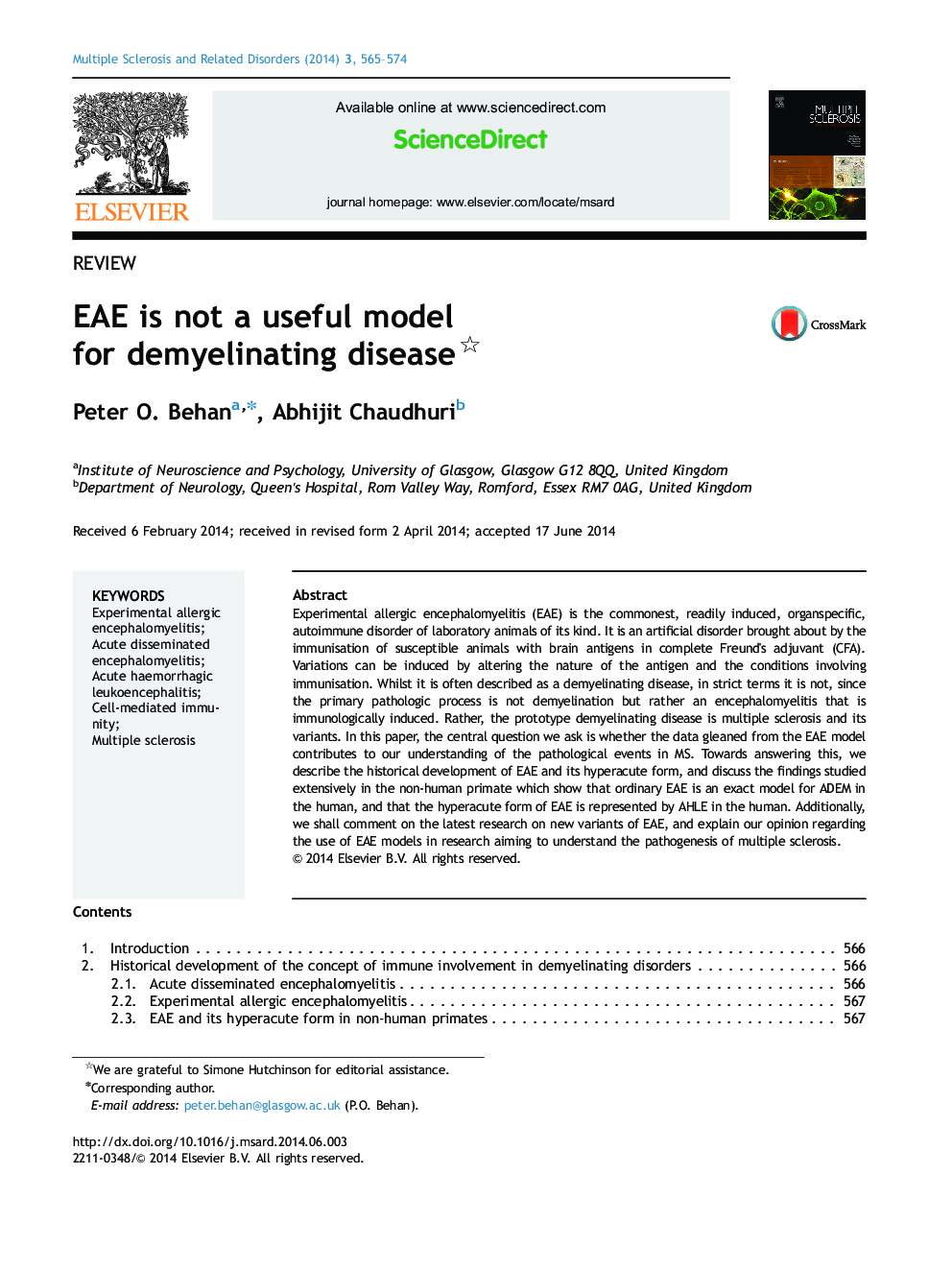| کد مقاله | کد نشریه | سال انتشار | مقاله انگلیسی | نسخه تمام متن |
|---|---|---|---|---|
| 2823818 | 1161432 | 2014 | 10 صفحه PDF | دانلود رایگان |

• We describe the milestones in the historical development of EAE.
• The clinical and immunological features of EAE in non-human primates.
• The response to therapy in EAE is contrasted with MS.
• EAE is shown not to be a model for MS.
Experimental allergic encephalomyelitis (EAE) is the commonest, readily induced, organspecific, autoimmune disorder of laboratory animals of its kind. It is an artificial disorder brought about by the immunisation of susceptible animals with brain antigens in complete Freund׳s adjuvant (CFA). Variations can be induced by altering the nature of the antigen and the conditions involving immunisation. Whilst it is often described as a demyelinating disease, in strict terms it is not, since the primary pathologic process is not demyelination but rather an encephalomyelitis that is immunologically induced. Rather, the prototype demyelinating disease is multiple sclerosis and its variants. In this paper, the central question we ask is whether the data gleaned from the EAE model contributes to our understanding of the pathological events in MS. Towards answering this, we describe the historical development of EAE and its hyperacute form, and discuss the findings studied extensively in the non-human primate which show that ordinary EAE is an exact model for ADEM in the human, and that the hyperacute form of EAE is represented by AHLE in the human. Additionally, we shall comment on the latest research on new variants of EAE, and explain our opinion regarding the use of EAE models in research aiming to understand the pathogenesis of multiple sclerosis.
Journal: Multiple Sclerosis and Related Disorders - Volume 3, Issue 5, September 2014, Pages 565–574